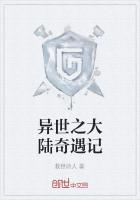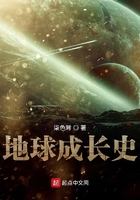Since 1219, Genghis Khan (1162-1227 A.D.) with his sons and grandsons marched westwards three times and conquered Central Asia and China, and built up a huge empire spanning the European and Asian continents, including large Muslim areas. In the Kublai Khan"s war against the Southern Song Dynasty to reunify China, many Arabs, Persians and Central Asians who believed in Islam organized the Western Region Army and participated in this war. When the war was over, these Muslim soldiers stayed where they fought to grow crops and graze horses. They were scattered all over the country, while many more werein the Northwest and a small number were dispersed in the Southwest and Central regions, afterwards some were moved south of the Yangtze River. Most of the Muslim soldiers coming along with the army usually did not take their families. They married local women and multiplied after they settled down. Moreover, the Mongols dispatched a great number of Muslim craftsmen to many places in the country, most of whom settleddown where they worked. In the Yuan Dynasty, the Muslims from the Western Region and their descendants were called Hui Hui, who belonged to Se Mu (one of the four classes into which China"s population was divided in the Yuan Dynasty, including Central Asian allies of the Mongols, mostly Uighurs and other Turks.)? As Muslims in the Yuan Dynasty had made great contributions to the establishment of the Dynasty, they were given high social status that was only below that of the Mongols and above that of the Hans and the Southerners. The upper circle of Muslims were placed in important positions by Yuan rulers, and some of them ranked among the ruling class. In this period of time, the Muslim population increased at a sharp rate, and Islam spread and developed rapidly. The distribution structure of the Muslim population which could be described as “being dispersed widely and concentrated in small groups” was taking shape. It was a time when Islam experienced great development.
The development of Islam in the Yuan Dynasty was related to the birth and growth of the Hui Huis. The term “Hui Hui” appeared earliest in Shen Kuo"s book “Meng Xi Bi Tan”(Notes Written in Dream) in the Northern Song Dynasty (960-1127
A.D.), referring to the Hui Hus in the Tang Dynasty. During theTang and Song Dynasties, the Hui Hui had not come into beingas an ethnic group, so it had nothing to do with Islamic religion. Since the Southern Song Dynasty (1127-1279 A.D.), the conception of the term of Hui Hui was broadened to cover the Muslim peoples, states and places in the Western Region. In the Yuan Dynasty, as the transportation and communication between China and the West further developed, large numbers of Muslims in West and Central Asia came to China. By then the term "Hui Hui‘ referred to all Muslim groups immigrating from the Central Asia, Persia and Arabia to China. In the early period of the Yuan Dynasty, Muslims coming from the Sea Route were called “Nan Fan Hui Hui” (Muslims in the South)? It was said in “Gui Xin Za Shi” by Zhou Mi: “Today, all the Hui Huis take the Central Region of China as their home, while there are many more in the south of the Yangtze River.” By the second year of Emperor Xianzong (1252 A.D.), the term "Hui Hui’ was used in official census, and it became the special ethnic name of the Muslims living the central region of China in the Yuan Dynasty.
It was a long historic course that the Hui Huis were turned into an ethnic group. During the period of the Tang and Song Dynasties, the Arab and Persian Muslims who had already taken up permanent residence in China lived in commercial cities located on main traffic lines. They intermarried with local peoplesand multiplied, and the population of the local-born Muslims increased steadily. They became the earliest Muslims in China and the ancestors of the Hui Huis.
The Mongols‘ three conquering marches to the west during the Yuan Dynasty (1206-1368 A.D.) led to the migration of various ethnic groups, classes and professionals to the east. They were not only confined to the cities located on traffic lines, but widely spread throughout the countryside, commercial towns and places where Chi Ma Tan Jun (Muslim troop composed of the tribes in the Western Region) stationed, covering a vast area from Mobei and Dadu (now Beijing) to the south of the Yangtze River, and Yuannan and the Northwest. The population and extension of the Hui Huis went far beyond that in the period of the Tang and Song Dynasties. They were allowed to marry local women and multiply when they settled down in various places, and as a result the population the Hui Huis increased at a sharp rate.
The Mongols‘ conquering marches to the west put an end to the splitting-up situation of the northern and southern sides of the Tianshan Mountains and enabled communication and amalgamation between the olds tribes. Moreover, some Mongol kings and Khans embraced Islam and it exerted a great influence on the spread of Islam in this region. The Hui Huis grew muchstronger when the Uighurs, some of the Mongols and other tribes joined in by embracing Islam.
The national migration taking place in the Yuan Dynasty made a large number of the Hui Huis begin to live a new life dependent on farming. The preferential treatment given by the Yuan government together with their own efforts enabled Muslims to live in one place for a long period of time and maintain their life without any economic aid from the outside world. The class system practiced during the Yuan Dynasty created favorable conditions for the development of the Hui Huis. They enjoyed certain privileges on many aspects such as working in the government, paying lower taxes and attending the imperial examinations. It made it possible for different tribes and groups of the same class with the same religious belief and custom to amalgamate and become one ethic community.















